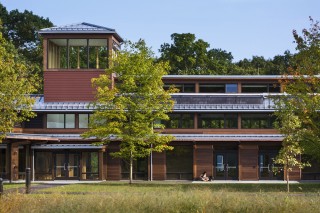An 8-year-old imagines a dinosaur, designs a sketch, and watches as a Makerbot 3D printer brings his T-Rex to life. On the other side of a frosted glass divider, a group of eighth-graders produces a fictional news broadcast with green-screen technology. No, this isn’t a science museum; it’s a glimpse of what’s possible in the new SPARQ Innovation Center and Makerspace, which Good Shepherd Episcopal School recently unveiled for its students and the surrounding community.
Located in the school’s library, the center facilitates hands-on learning experiences through high-tech tools that utilize and combine elements of science, technology, engineering, math and the arts. SPARQ, which stands for “solving problems, asking real-world questions,” came from collaboration among parents, teachers and Laurie Daum, the head of school, along with the school’s director of technology, Julie McLeod. One student’s father, Dave Copps, attended the 2013 South by Southwest Interactive Festival and returned with the concept for a new research and design center. Copps imagined a space where a child’s imagination would be the jumping-off point for learning. “We had so much energy when we talked about this. We felt like it wasn’t just a good idea: It was the future of education,” McLeod says.
“Many makerspaces and science labs are for high school students, but all of our students will be able to walk into the SPARQ space and use something,” McLeod says.
That inclusivity applies not only to Good Shepherd students but to children beyond the campus. McLeod has partnered with Eagle Scholars, a college-readiness program organized by the Vickery Meadow Youth Development Foundation, which raises funds and hosts programs for young people living in the densely populated Vickery Meadow apartment communities just east of Preston Hollow. Through the partnership, students can visit the SPARQ center once a week during the summer. In June, GSES will host an additional community-wide science camp.


